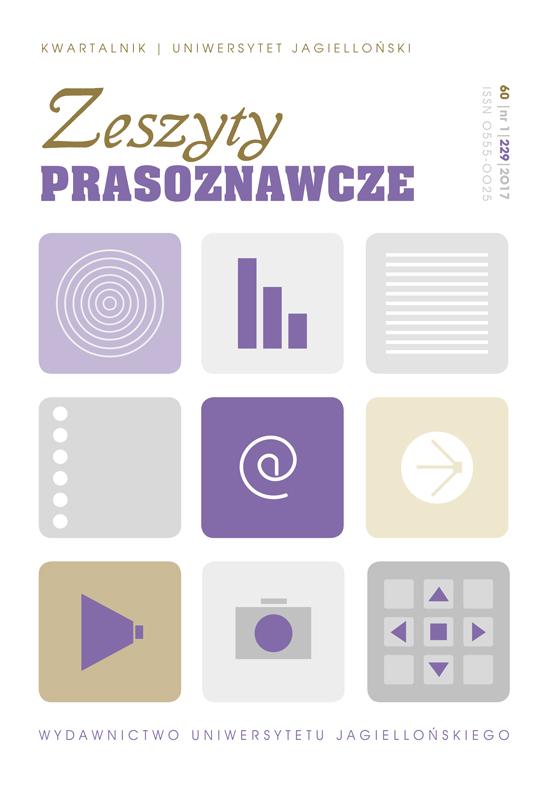Jak badać prasę drugiego obiegu?
How to research the underground press?
Author(s): Konrad KnochSubject(s): Communication studies
Published by: Wydawnictwo Uniwersytetu Jagiellońskiego
Keywords: second circuit; underground press; samizdat; democratic opposition; modern history of Poland (PRL); oral history
Summary/Abstract: The second circuit press is one of the most important historical sources to describe modern Polish history. The studies call for a holistic approach, i.e. the overall research of individual newspapers or thematic exhaustive comparative analysis, carried out by selecting the broadest possible research sample. In the first stage there should be wide queries conducted in order to determine the actual state of research on the topic that interests us. In the second stage a detailed analysis of the content of a newspaper or newspapers must be undertaken, through which a thematic categorization key is developed. For each key-topic selected texts are assigned. Then we measure the area of individual texts on a certain topic by number of pages or cm2. We provide statistical reports serving as a starting point for substantive analysis of texts from the second circuit press. In press we also look for information on the origin of the newspapers, people or environments issuing them, organizational problems etc. The “conversation” of the researcher with the press becomes the preparation for interviews with its creators, authors. Then we start searching for editors or underground printers preceded by the preparation of a comprehensive and exhaustive questionnaire. The next step is to call the notation of sound or film with the people we were able to reach, and who are often (in the absence of archival materials) the only source of information enabling us to work on underground publications. The investigator becomes a mediator in the dialogue between the press and its creator. Another important link in the research on illegal publishing is the analysis of archival materials – primarily operational documents of the Security Service that are stored in the Institute of National Remembrance.It is a specific research triangle: analysis of the content of the press, conversation with its creators and analysis of archival documents. It allows you to make a chronicle record of the past reality and to save an important part of the modern Polish history from oblivion.
Journal: Zeszyty Prasoznawcze
- Issue Year: 2017
- Issue No: 1 (229)
- Page Range: 119-136
- Page Count: 18
- Language: Polish

